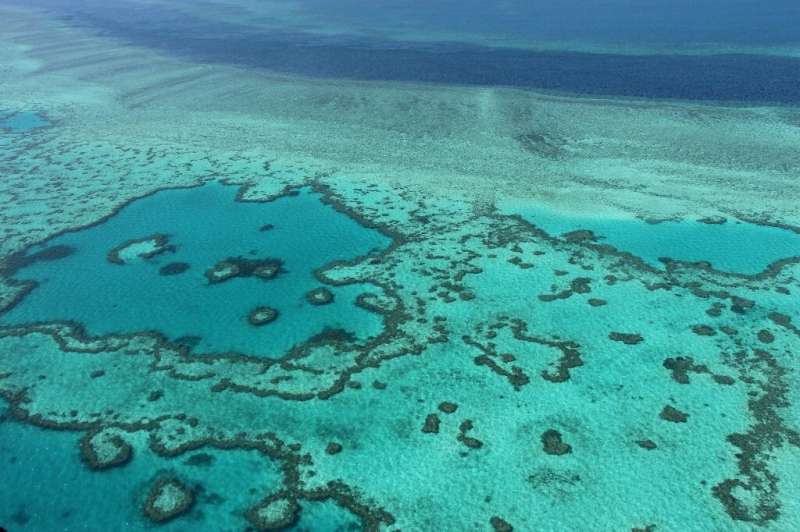The Great Barrier Reef is the world's largest living structure and is visible from space.
After years of climate-worsened damage to its vibrant corals, Australia's vast Great Barrier Reef will not be added to UNESCO's list of endangered World Heritage sites.
The reef was one of seven sites globally facing a downgrade at a meeting in China over issues including ecological damage, overdevelopment, overtourism and security concerns.
But Australia has successfully averted an "in danger" listing despite growing climate change concerns.
What is the World Heritage list?
There are more than 1,100 UNESCO World Heritage sites worldwide recognised for their "outstanding universal value" and natural or cultural importance.
The Great Barrier Reef—the world's largest living structure, visible from space—was added to the list in 1981 for its "superlative natural beauty" and extensive biodiversity.
But the list is not permanently fixed and sites can be downgraded or even deleted entirely on the UN body's recommendation.
While placement on the "in danger" list is not considered a sanction—some nations have their sites added to gain international attention to help save them—others see it as a dishonour.
Why did the reef risk losing its status?
The reef has suffered three mass coral bleaching events in the past five years, by some measures losing half its corals since 1995 as ocean temperatures have climbed.
It has also been battered by several cyclones, as climate change drives more extreme weather, and outbreaks of crown-of-thorns starfish which eat the coral.
"It's a warning to the international community and all of humanity that the coral ecosystem is in danger," Fanny Douvere, the head of UNESCO's world heritage marine programme, said in June.
UNESCO took aim at Australia for its lacklustre climate efforts, as the government resists calls to commit to net zero emissions by 2050 while seeking to protect its resource-reliant economy.
Australian government scientists say the corals have made a comeback over the past year, but acknowledge that will not improve the ecosystem's "very poor" long-term outlook.
How did Australia respond?
When the UN threatened to downgrade the reef's World Heritage listing in 2015, Australia created a "Reef 2050" plan and poured billions of dollars into protection.
This time around, Canberra launched a major lobbying effort, sending the country's environment minister to Paris to meet World Heritage Committee members and taking key ambassadors on a reef snorkelling trip.
There were fears that an "in danger" listing could dent the massive global appeal of the reef—the glittering jewel in Australia's tourism crown.
The 2,300-kilometre-long (1,400-mile-long) ecosystem was worth an estimated US$4.8 billion a year in tourism revenue for the Australian economy before the coronavirus pandemic.
Canberra was able to convince the delegates—including leading fossil-fuel producers Russia and Saudi Arabia—to give conservation efforts more time, with Australia told to report back on the reef's status in 2022.
© 2021 AFP
























